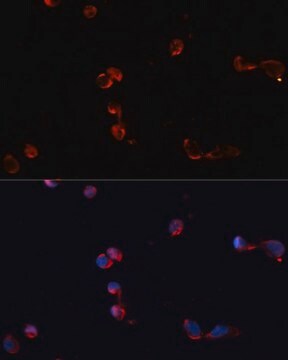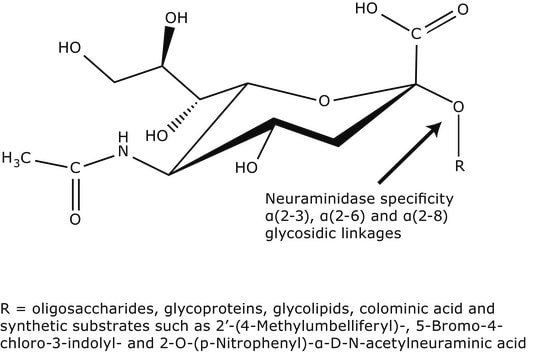Wichtige Dokumente
C9336
Anti-Chloramphenicol Acetyl Transferase (CAT) antibody produced in rabbit

IgG fraction of antiserum, buffered aqueous solution
Synonym(e):
CAT Antibody - Anti-Chloramphenicol Acetyl Transferase (CAT) antibody produced in rabbit, Cat Antibody
About This Item
WB
western blot: 10 μg/mL using eukaryotic cells transfected with a plasmid bearing the CAT gene
Empfohlene Produkte
Biologische Quelle
rabbit
Qualitätsniveau
Konjugat
unconjugated
Antikörperform
IgG fraction of antiserum
Antikörper-Produkttyp
primary antibodies
Klon
polyclonal
Form
buffered aqueous solution
Mol-Gew.
antigen 26 kDa
Erweiterte Validierung
recombinant expression
Learn more about Antibody Enhanced Validation
Methode(n)
indirect immunofluorescence: 10 μg/mL using eukaryotic cells transfected with a plasmid bearing the CAT gene
western blot: 10 μg/mL using eukaryotic cells transfected with a plasmid bearing the CAT gene
Versandbedingung
dry ice
Lagertemp.
−20°C
Posttranslationale Modifikation Target
unmodified
Allgemeine Beschreibung
Spezifität
Immunogen
Anwendung
- immunoblotting
- indirect immunofluorescence
- immunofluorescence microscopy
Biochem./physiol. Wirkung
Anti-Chloramphenicol Acetyl Transferase (CAT) antibody is specific for bacterial CAT and recombinant CAT expressed in transfected eukaryotic cells (a predominant band of approx. 26 kD). Staining of CAT by the antibody is inhibited by the bacterial CAT antigen in cells transfected with CAT.
Physikalische Form
Haftungsausschluss
Sie haben nicht das passende Produkt gefunden?
Probieren Sie unser Produkt-Auswahlhilfe. aus.
Lagerklassenschlüssel
10 - Combustible liquids
WGK
WGK 3
Flammpunkt (°F)
Not applicable
Flammpunkt (°C)
Not applicable
Hier finden Sie alle aktuellen Versionen:
Besitzen Sie dieses Produkt bereits?
In der Dokumentenbibliothek finden Sie die Dokumentation zu den Produkten, die Sie kürzlich erworben haben.
Unser Team von Wissenschaftlern verfügt über Erfahrung in allen Forschungsbereichen einschließlich Life Science, Materialwissenschaften, chemischer Synthese, Chromatographie, Analytik und vielen mehr..
Setzen Sie sich mit dem technischen Dienst in Verbindung.




